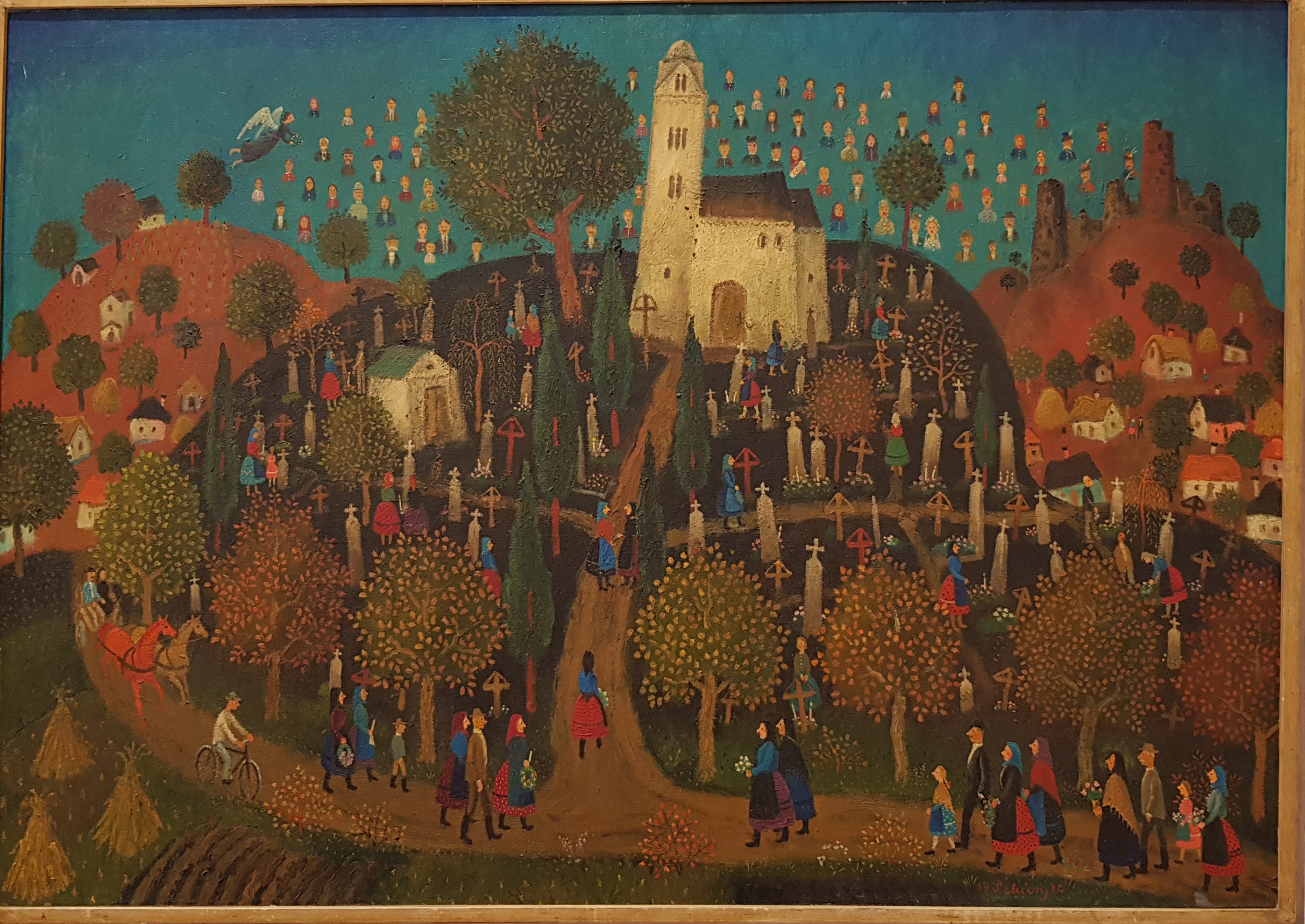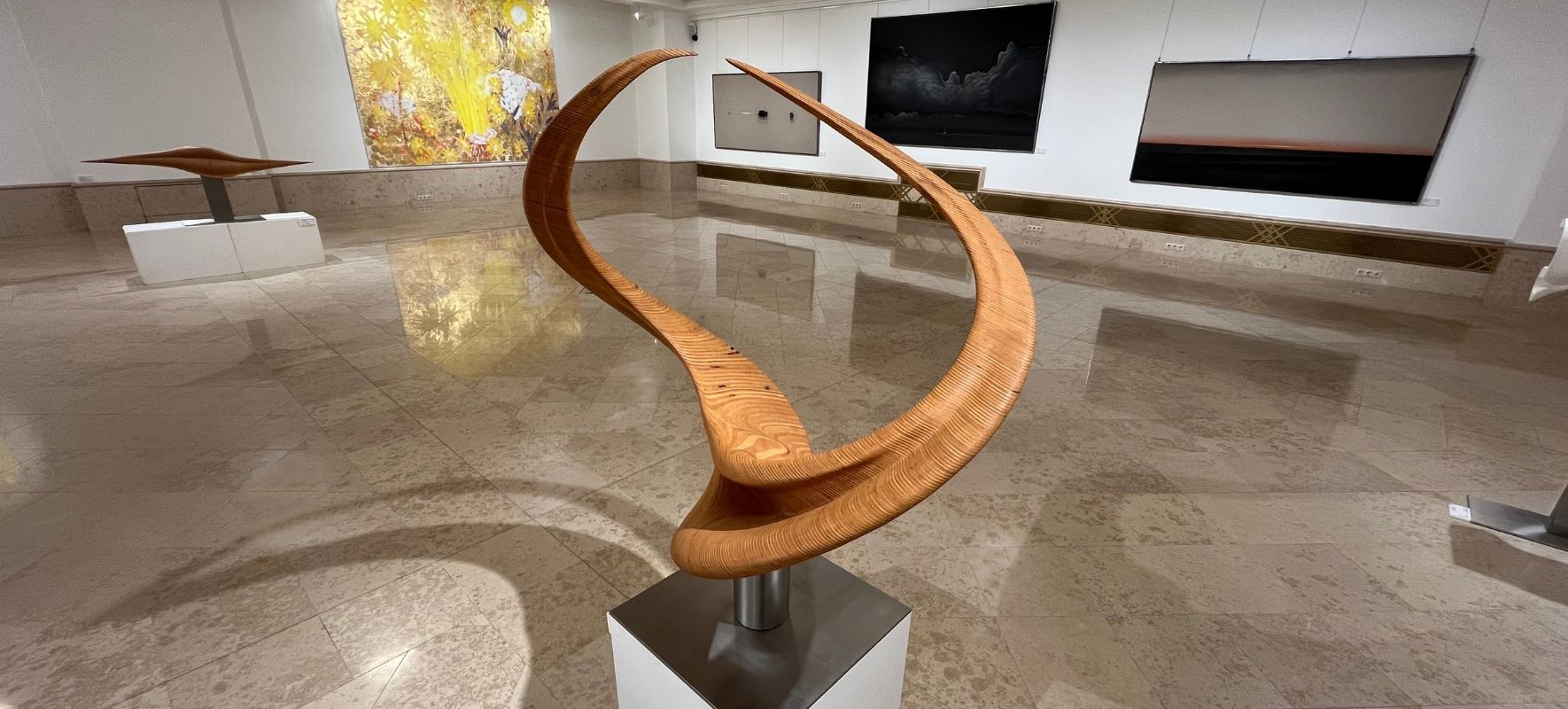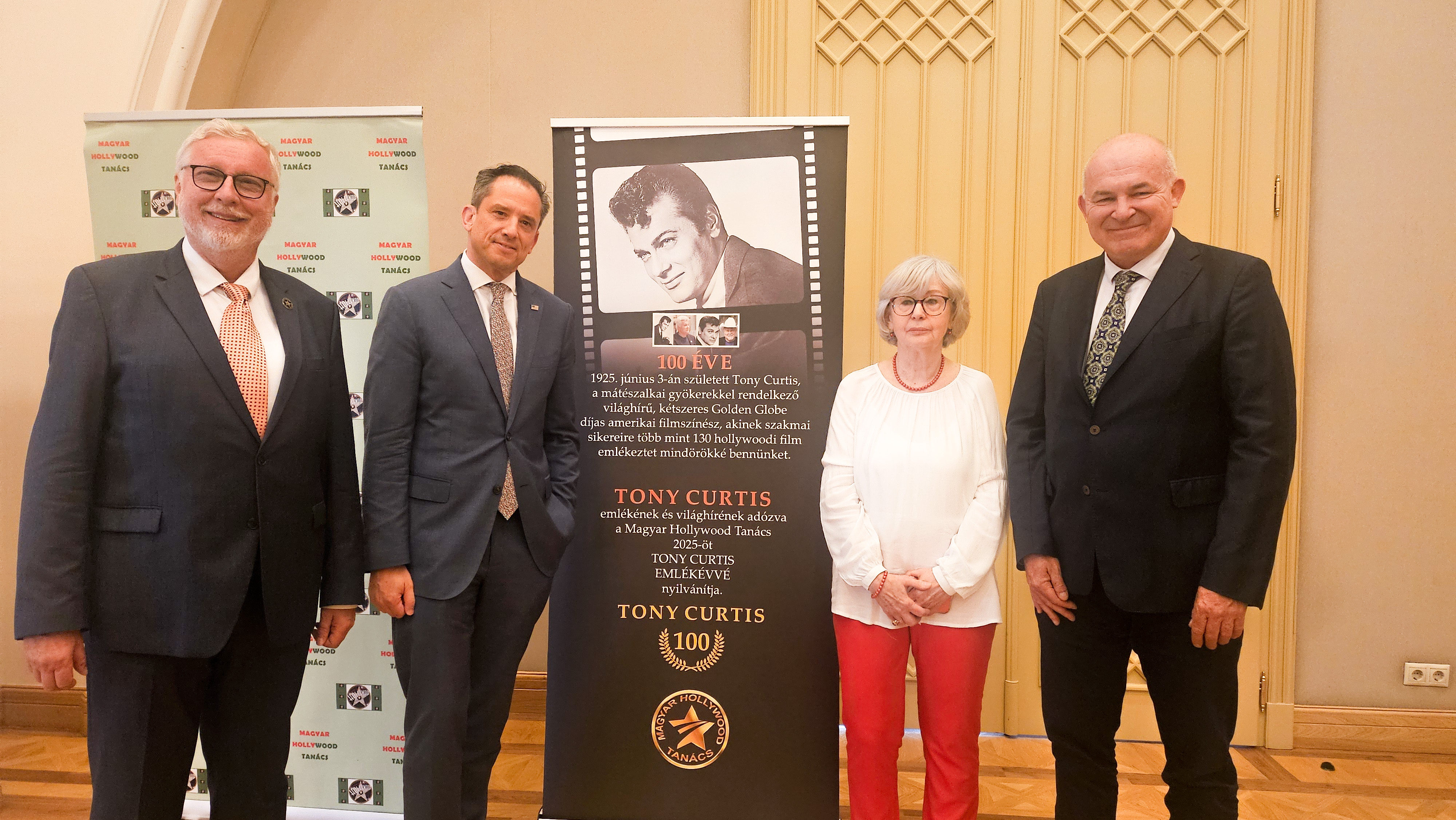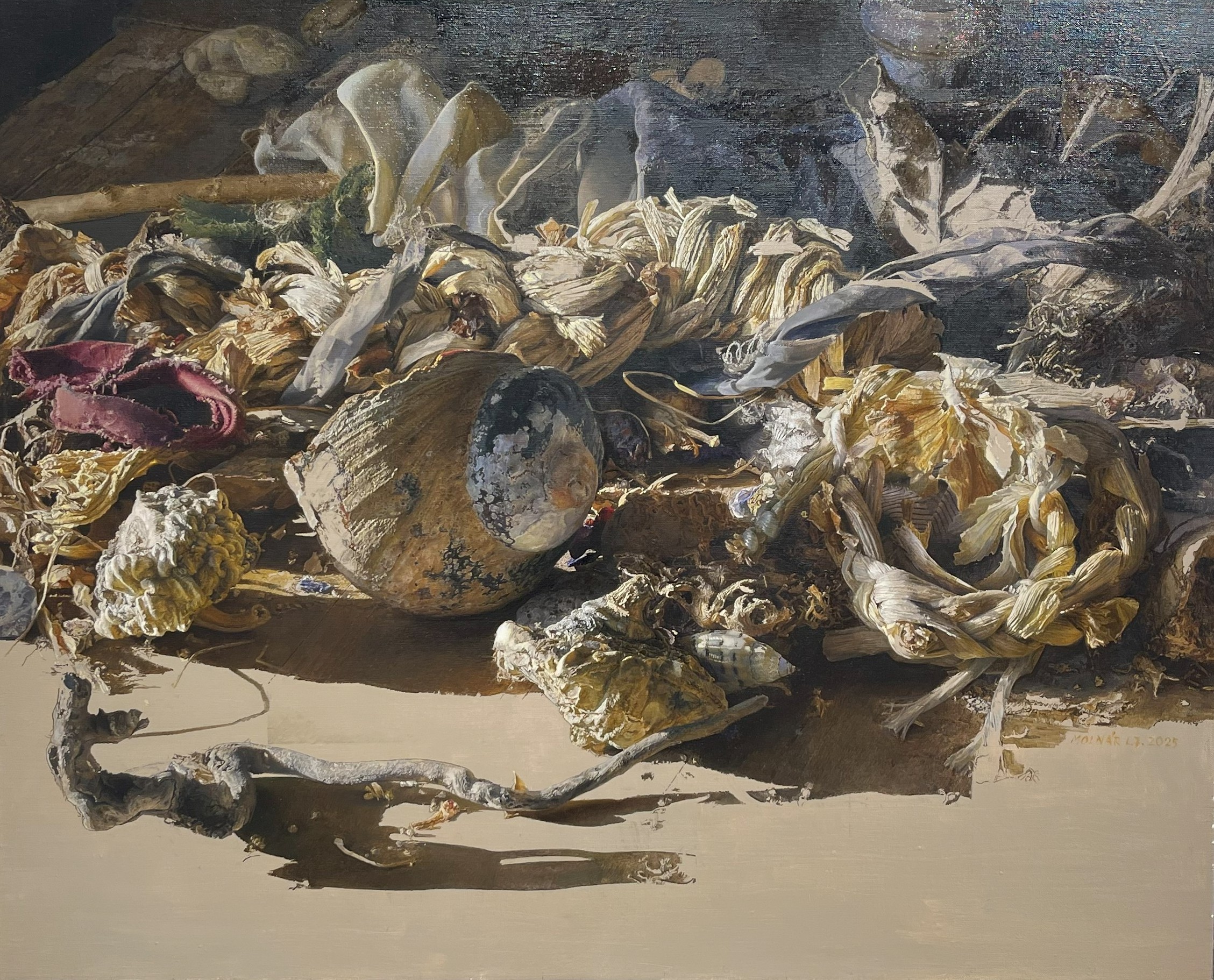
Work of Art in Focus
Munkácsy Award winner painter, graphic artist and textile designer István Pekáry lived from 1905 to 1981. He studied at the Hungarian College of Fine Arts and, having won a scholarship granted by the Hungarian state, he continued his studies in Rome. Apart from wood panel painting, his versatile art includes gobelin weaving, stage design and also fresco painting. Developed with the help of mirroring folk art images, his characteristically unique style exhibits a distinctly professional use of colours, paints and brush strokes as well as expert image editing. His fairy tale like narrative images often feature events from legends and children's tales or relate to significant and cherished days of celebration.
On 2nd November, the Day of the Dead was celebrated in the Benedictine Order as a day of remembrance first by Abbot Saint Odilo of Cluny in 998. Soon the Day was also observed outside the Benedictine Order but the celebration of this Day became popular only in the 14th century. Remembering the dead, lost relatives and loved ones is based on the Catholic teaching of Purgatory: those await cleansing in Purgatory who died in the state of sanctifying grace but need purification for finding heavenly happiness. Those left behind on earth pray, show penance, and light candles in memory of the deceased. According to folk traditions and beliefs, graves must also be decorated and embellished at that time of the year "so that the dead feel like staying in their graves". At many places, it was also customary to take some food to the cemetery. This Day, which originally commemorates a "celebration of hope" in eternal life, is cherished by Mediterranean peoples even today by organising a "fiesta", a kind of celebratory festivity.
There are similarities and symbolic parallels between the reverence of the Eucharist, and the folk traditions and customs associated with the Day of the Dead.
By hosting celebrations of the Holy Communion, the Church offers believers its donation including the wafer and the communion wine, juts like Jesus offered himself to the Holy Father. Redemption becomes possible through Jesus' death on the cross, which promises absolution from sins and an escape from the otherwise ensuing "eternal death".
According to Hungarian folk traditions, on the Day of the Dead it is customary to bake milk loaves, pies or scones, which symbolically relate to the wafer consumed at the Holy Communion. On that day, many people place candles in the windows and on tables as a symbol of Purgatory.
In a folk and naive style, István Pekáry's subject picture type painting presents celebrations in cemeteries on the Day of the Dead: linked to this day of celebration, Pekáry portrays cultures and lifestyles characteristic of country life by using stylised elements and idyllic ways of presentation.
Structure-wise, the composition can be divided into three parts: as a central motive, it shows a hill painted in darker colours, where the central scene takes place; the second motive is the two smaller hills painted in maroon surrounding the first bigger hill; while the third motive is the upper segment of the artwork showing the sky with the dead. The central part of the painting features a scene depicting a meeting: at the crossroads of the path leading through the cemetery and the path leading to the church, situated perpendicular to the former path, two women are talking. They are surrounded by a crowd of busy people, numerous events are taking place around them, and there is also a throng of people arriving at the cemetery. In the upper part of the painting, the dead – who are gathering around the church and are hovering between the earth and the sky, and whose relatives, in observance of folk traditions, are visiting the cemetery to decorate the graves with bunches of flowers and wreaths – are accompanied by an angel.
Some of the motives of the painting clearly signal Pekáry's characteristic and unique style: the artwork features powerful decorative motives of nature and shows awkwardly lovable human figures.



